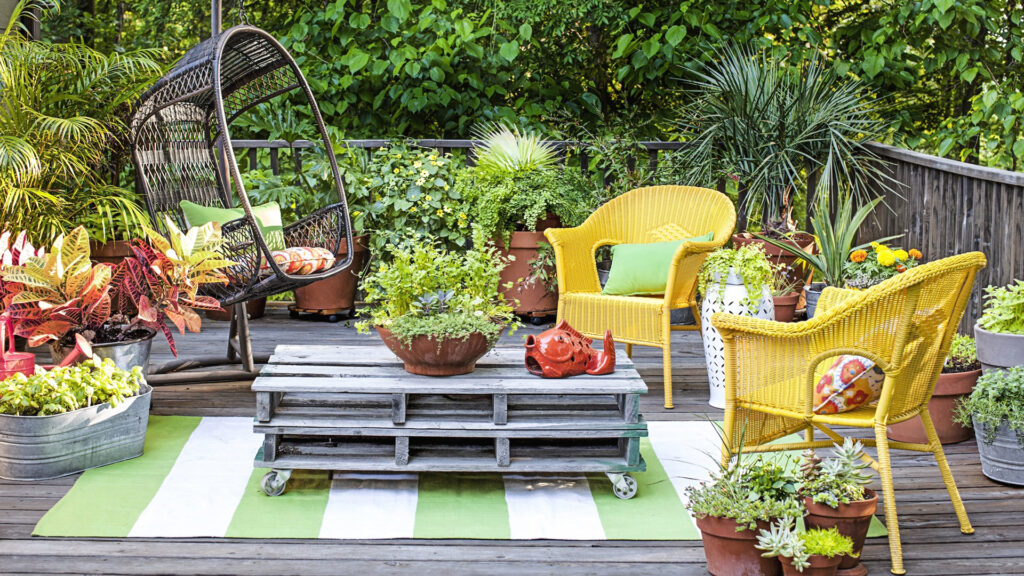Enhancing the beauty of your outdoor space with garden design can be a game-changer in creating a serene retreat. Whether you want a colourful and lively garden or a more relaxing and simple one, the right design can take beauty and utility to a new level in your yard. This article will discuss some critical garden design principles that can bring you closer to your dream garden oasis. Also, for a professional touch, landscapers in Gold Coast, Queensland, can help you realise your vision.
Planning Your Garden Design
Garden design requires proper planning, and the first step is garden design. You need to assess the space you have to work with and decide how you want to use it before picking out plants or putting in features. Consider how you want to feel in the garden—if you want a place to entertain, relax, or grow your vegetables, advises Rent Easy Management Specialists.
Evaluate the Space
To begin with, evaluate the scale and shape of your garden. Measure and do the math to determine its size and whether anything, like trees or buildings, stands in the way. Knowing your space will tell you how to place plants, paths, and features.
Identify Your Garden’s Purpose
Do you need a place to entertain, or would you like a quiet retreat to unwind? Try to design for your lifestyle. You would want to plan your garden to accommodate these interests. For instance, if you like entertaining, you may want to include seating areas, a fire pit, or a built-in barbecue in the design. If it’s more of a personal retreat you’re after, consider incorporating a cozy corner outfitted with some comfy seating or a hammock.
Choosing the Right Plants for Your Garden
One of the central tenets of garden design is choosing plants that do well in your climate. Garden design encompasses more than just how to make a space look beautiful; it’s also about how to make it work. Plants can fulfil different roles — to provide privacy, colour, and focal points.
Colour and Texture
Different colours and textures can add visual interest, so choose a range of plants. Foliage: Disparate flower, shrub, and tree foliage can add depth and richness to the garden. Also, consider the time of year. Adding flowering plants that bloom in different seasons is a great way to keep your garden full of life year-round.
Planting for Privacy and Shade
Think about planting shade or privacy trees (tall shrubs also work), especially if your garden is in an urban area. These plants can also act as a sound barrier, eliminating noise and providing more privacy. Also, well-placed plants can cut the sting of harsh sun rays, allowing you to enjoy your garden more when the weather gets hot.
Integrating Hardscaping into Your Garden Design
Hardscaping—pathways, patios, water features, and the like—is crucial to garden design and can significantly elevate outdoor space. It adds structure and functionality to your design, transforming it into more than just a space to grow plants.
Creating Pathways
Walkways not only help visitors navigate your garden but can also add to its overall style. Opt for stone, gravel, or wood that harmonises with your garden’s theme. Curved paths are usually more inviting and can establish a causal connection between garden spaces.
Adding Water Features
Water features can be fountains, ponds or streams that create tranquillity in your garden. The sound of running water sets the mood for a calm escape. If you have space, a small pond with swimming fish or flowering aquatic plants can be a beautiful addition to the garden.
Maintenance and Sustainability in Garden Design
Creating a gorgeous garden is only the beginning. It requires maintenance, like a pet or a household cleaner, to keep it looking good. Sustainable practices ensure optimum health for your garden and bolster environmental conservation efforts.
Low-Maintenance Plants
When choosing plants, opt for those that are drought-tolerant and low-maintenance. Native plants thrive in the local climate and, therefore, are a sustainable option for your garden that will require less input and resources. Adding plants like these to your design will reduce overwatering and overcare.
Irrigation Systems
A proper irrigation system can reduce the need for upkeep and help preserve water. Drip irrigation and soaker hoses are great solutions for channelling water right where you need it, at the roots, to prevent evaporation and wasted water.
Getting Professional Help from Landscapers Gold Coast Queensland
Sometimes, it’s best to leave your garden design in the hands of experts. For example, if you’re situated in the Gold Coast, Queensland, landscapers Gold Coast Queensland will ensure your garden is designed and built to suit your needs and the environment. They can assist with plant selection and hardscaping installation and ensure your garden looks impeccable all year round.
Professional landscapers can also advise on sustainability, maintenance, and design trends. Their knowledge of local climates allows them to recommend the best plants for your area, meaning less upkeep and a thriving garden.
Conclusion
When you plan a garden, you can add beauty and functionality to your yard. Gardening also requires sustainability practices, so you will have a beautiful outdoor haven that matches your style through meticulous garden design planning, plant selection, hardscaping elements, and adoption of sustainability practices.
Consider engaging landscaping professionals in Gold Coast, Queensland to elevate your home garden space. They are educated enough to do it quickly and ensure that you see your vision become a reality and that it prospers for years. With the right design, your garden can become a space to relax, entertain, and enjoy the great outdoors in all its glory.






